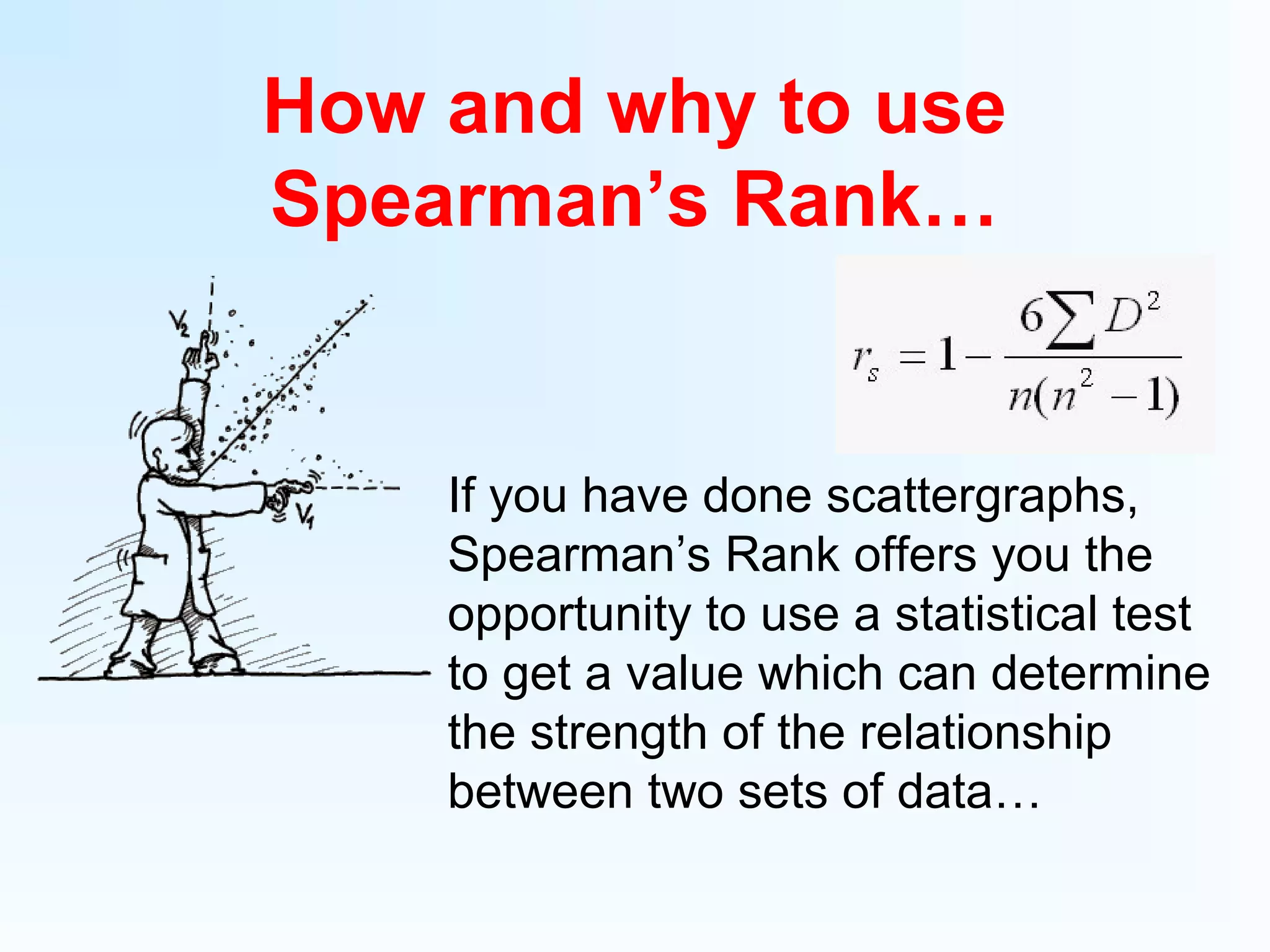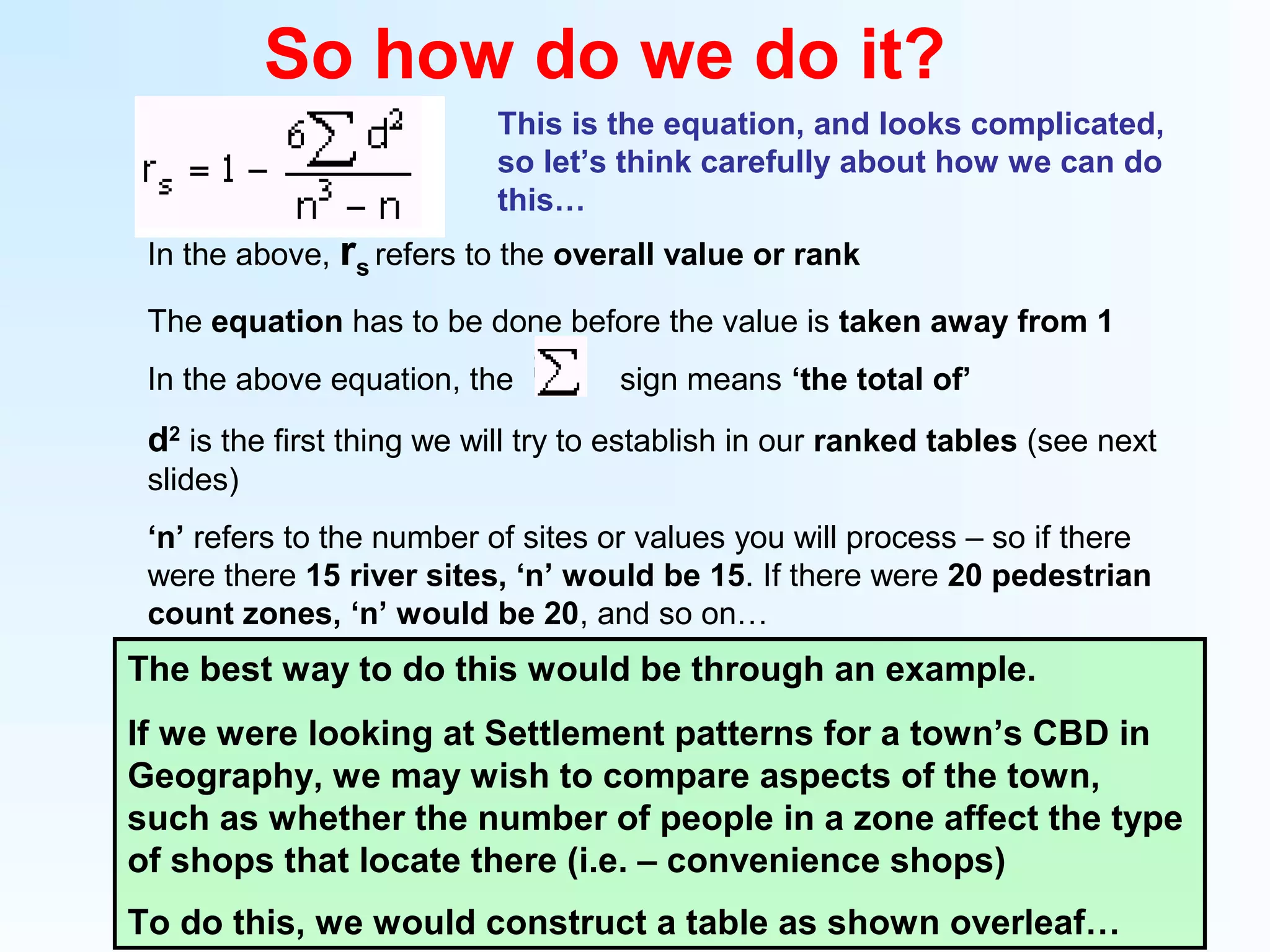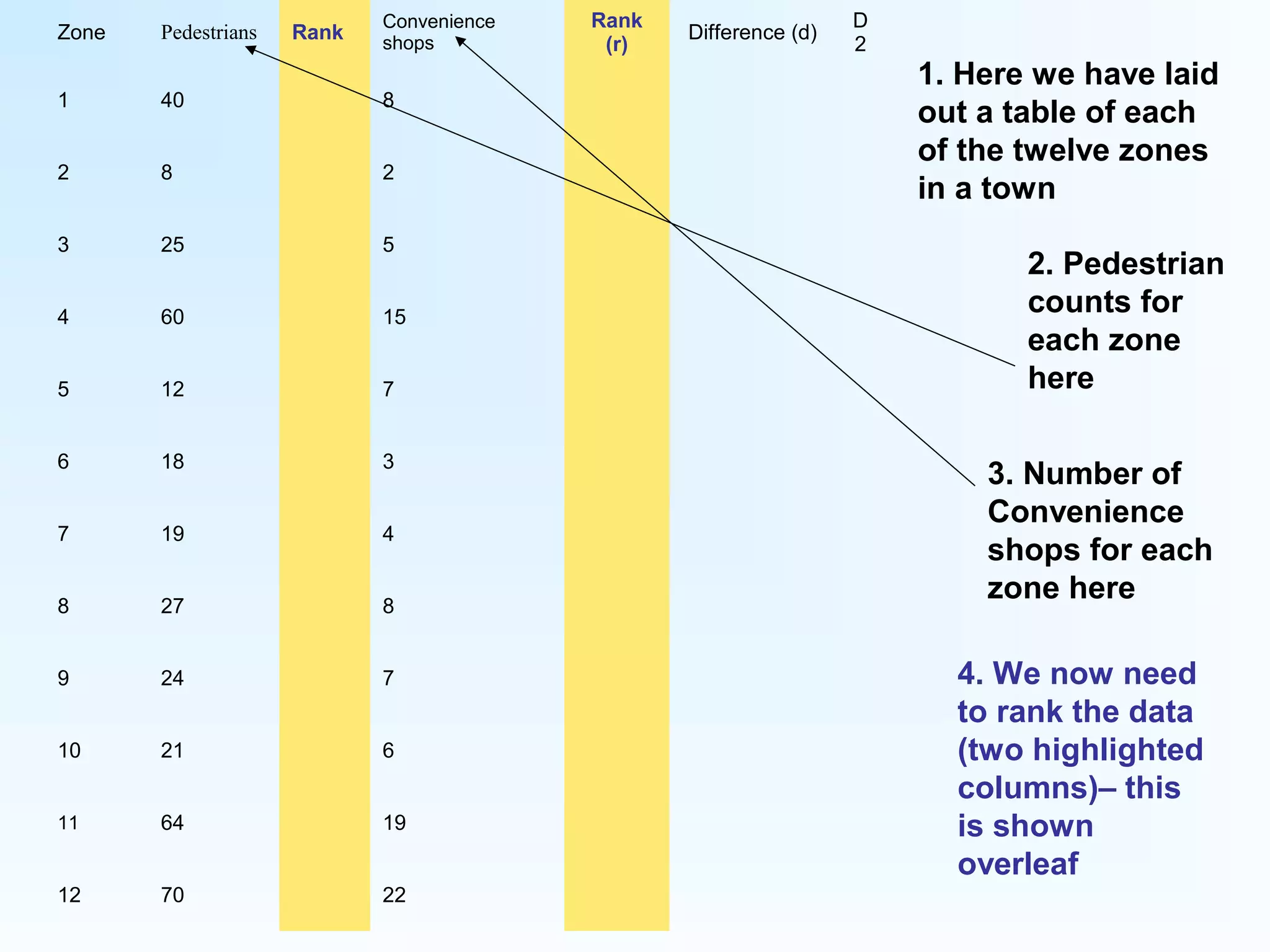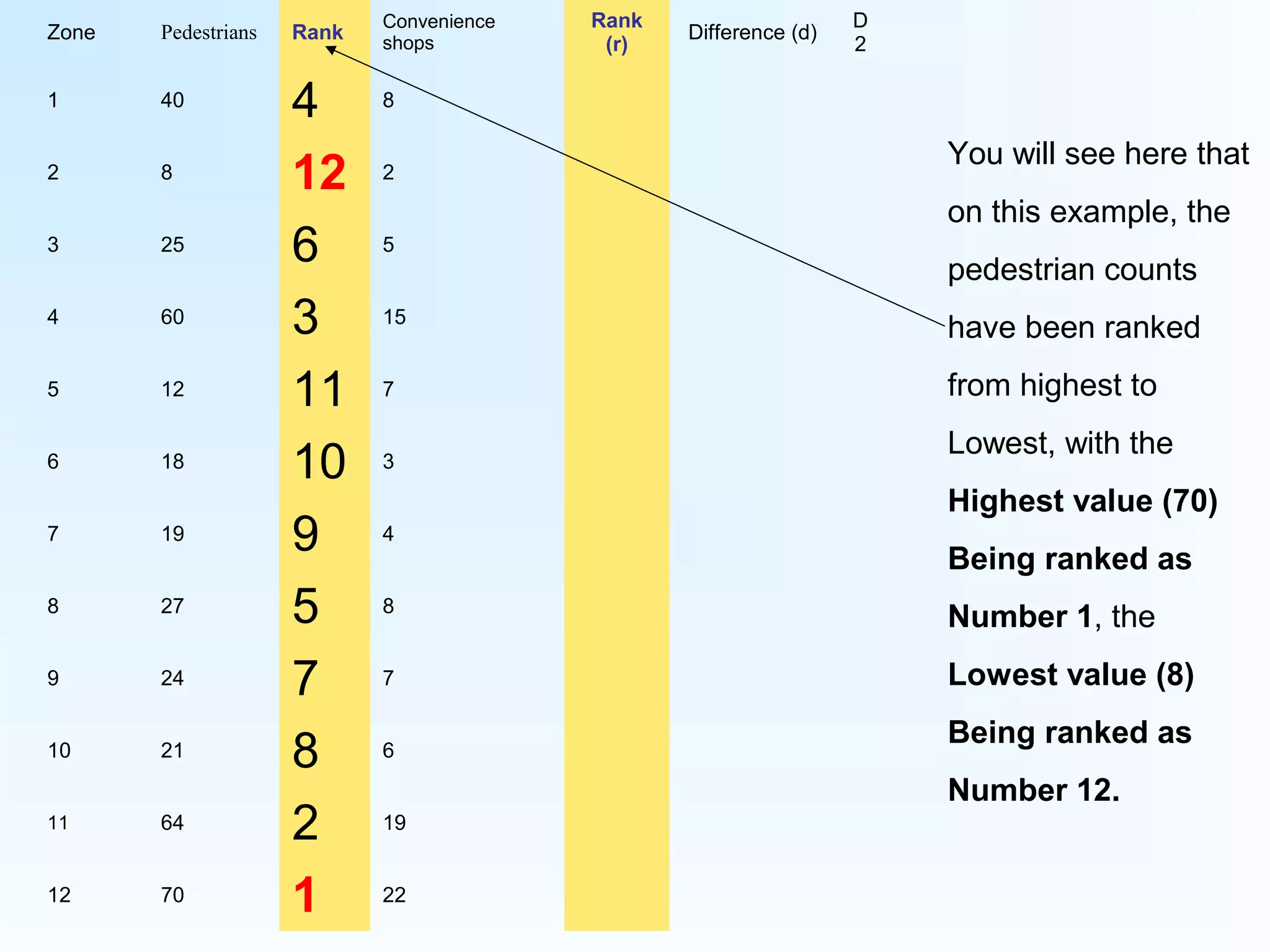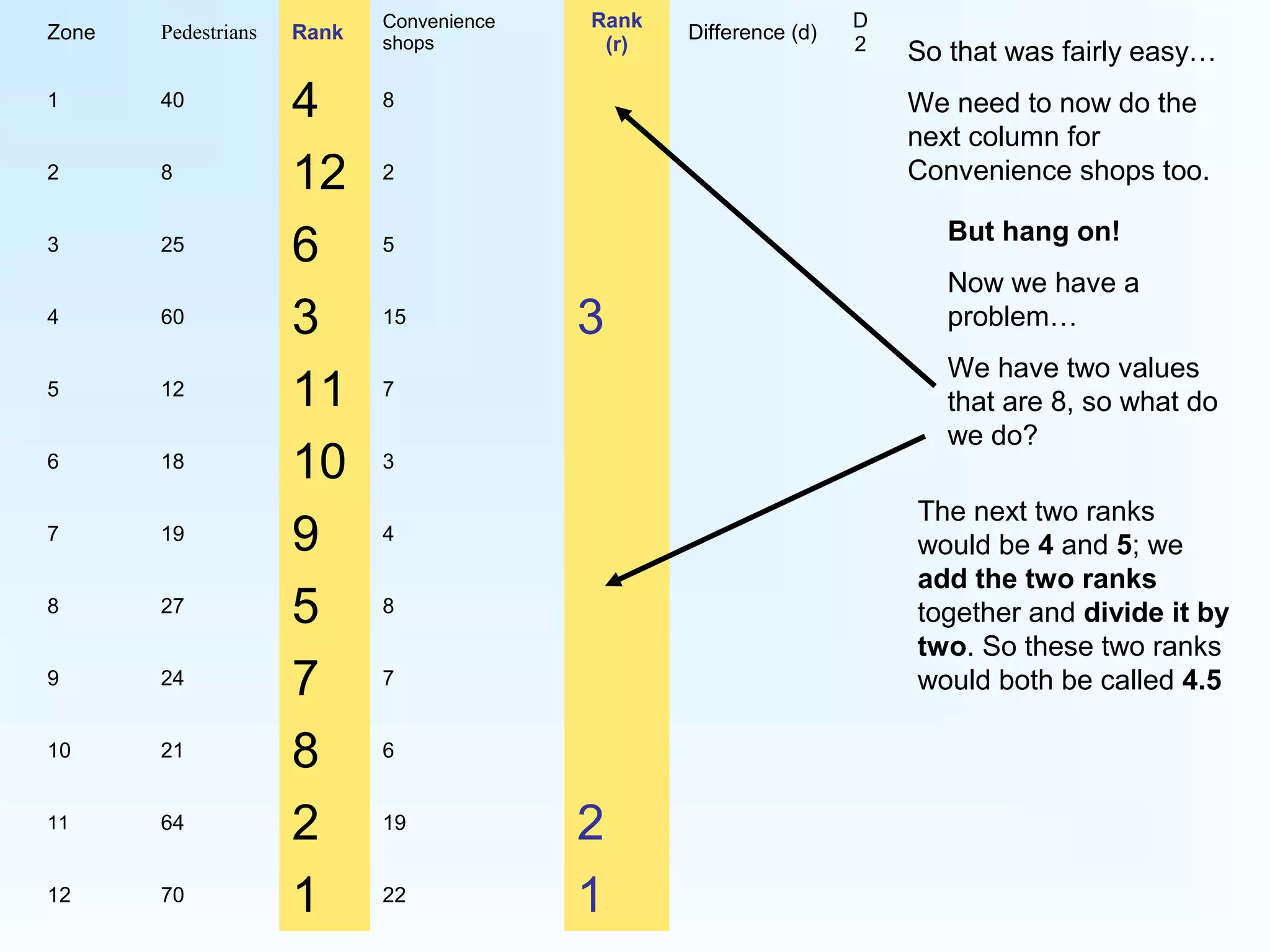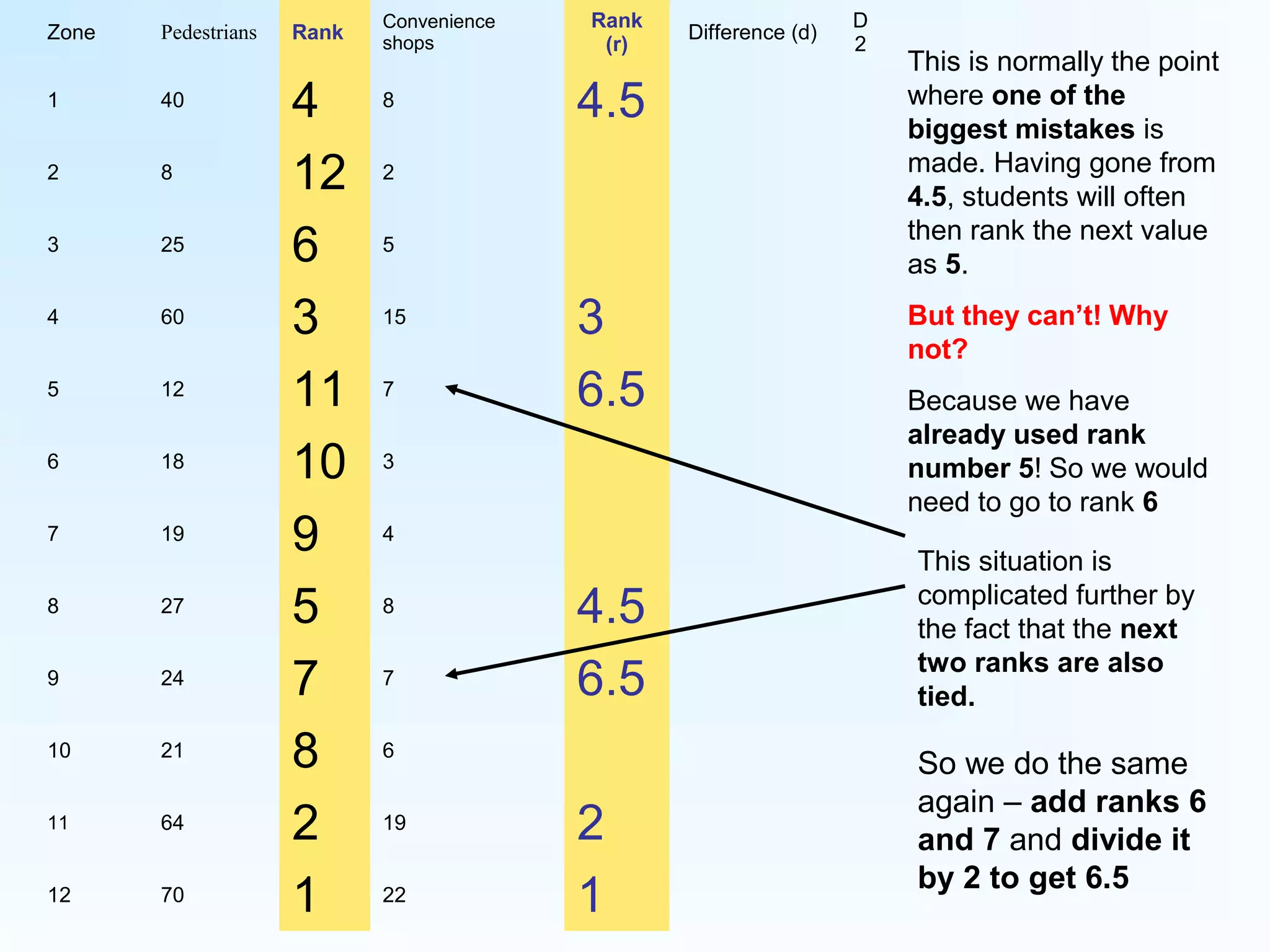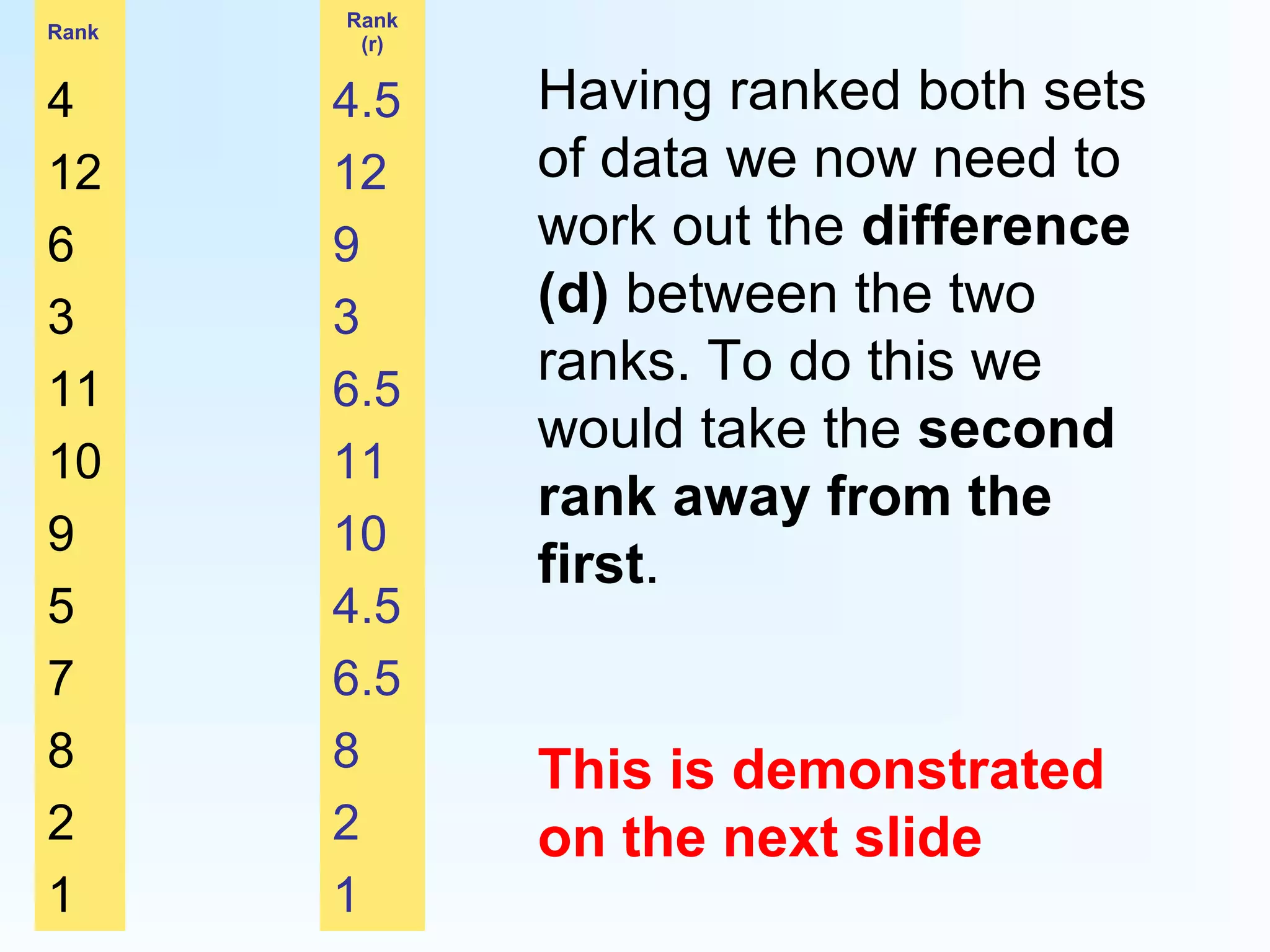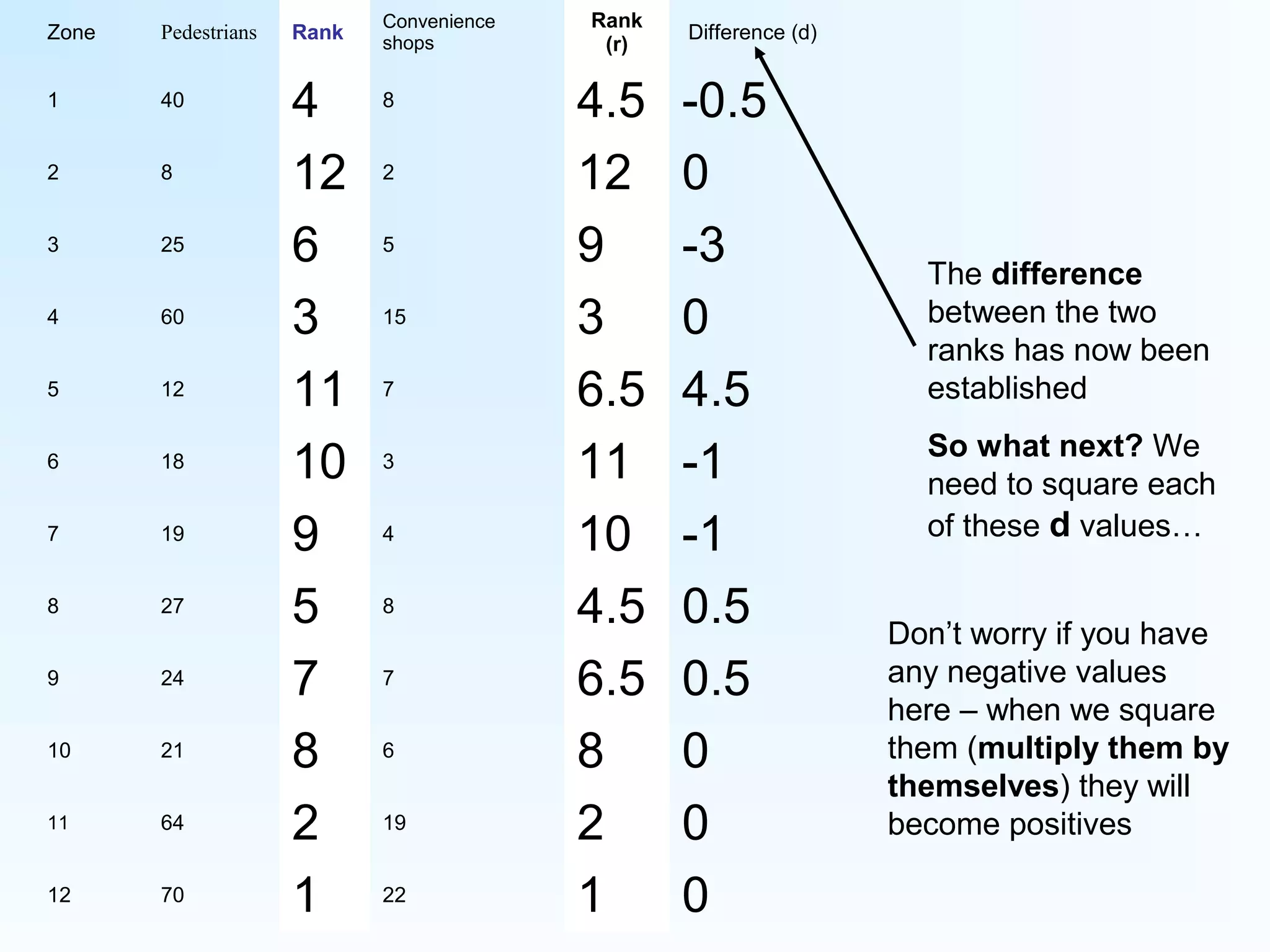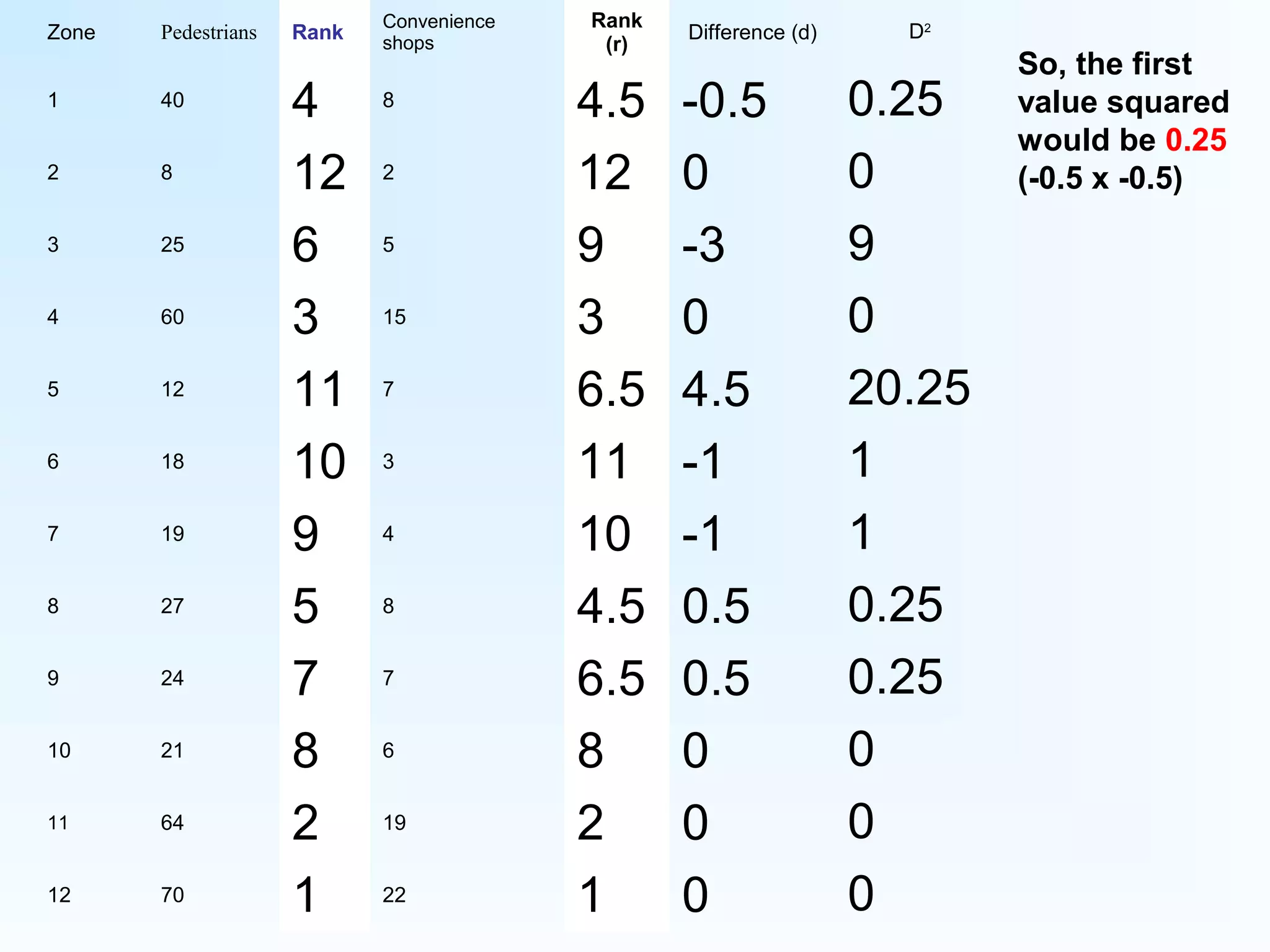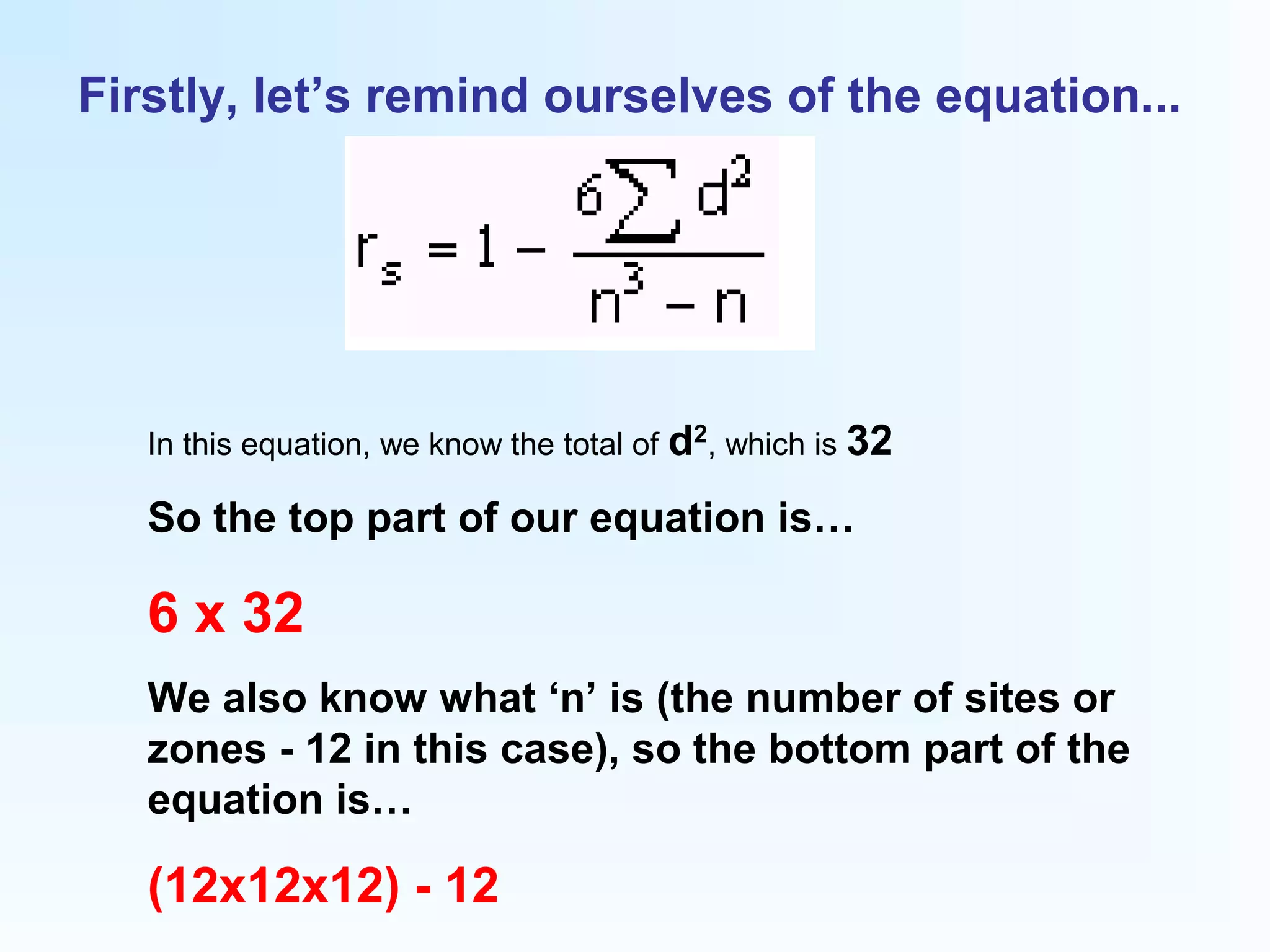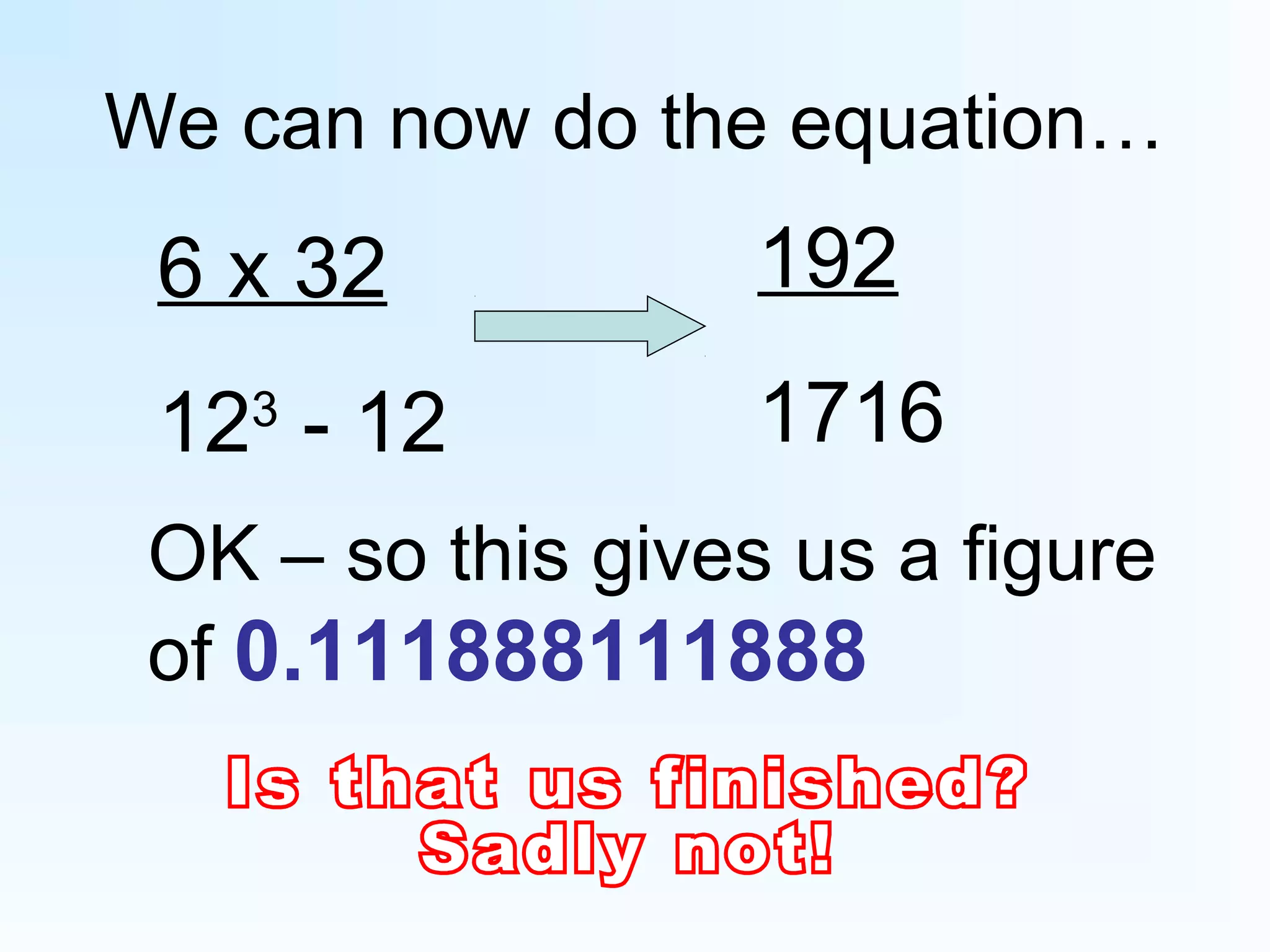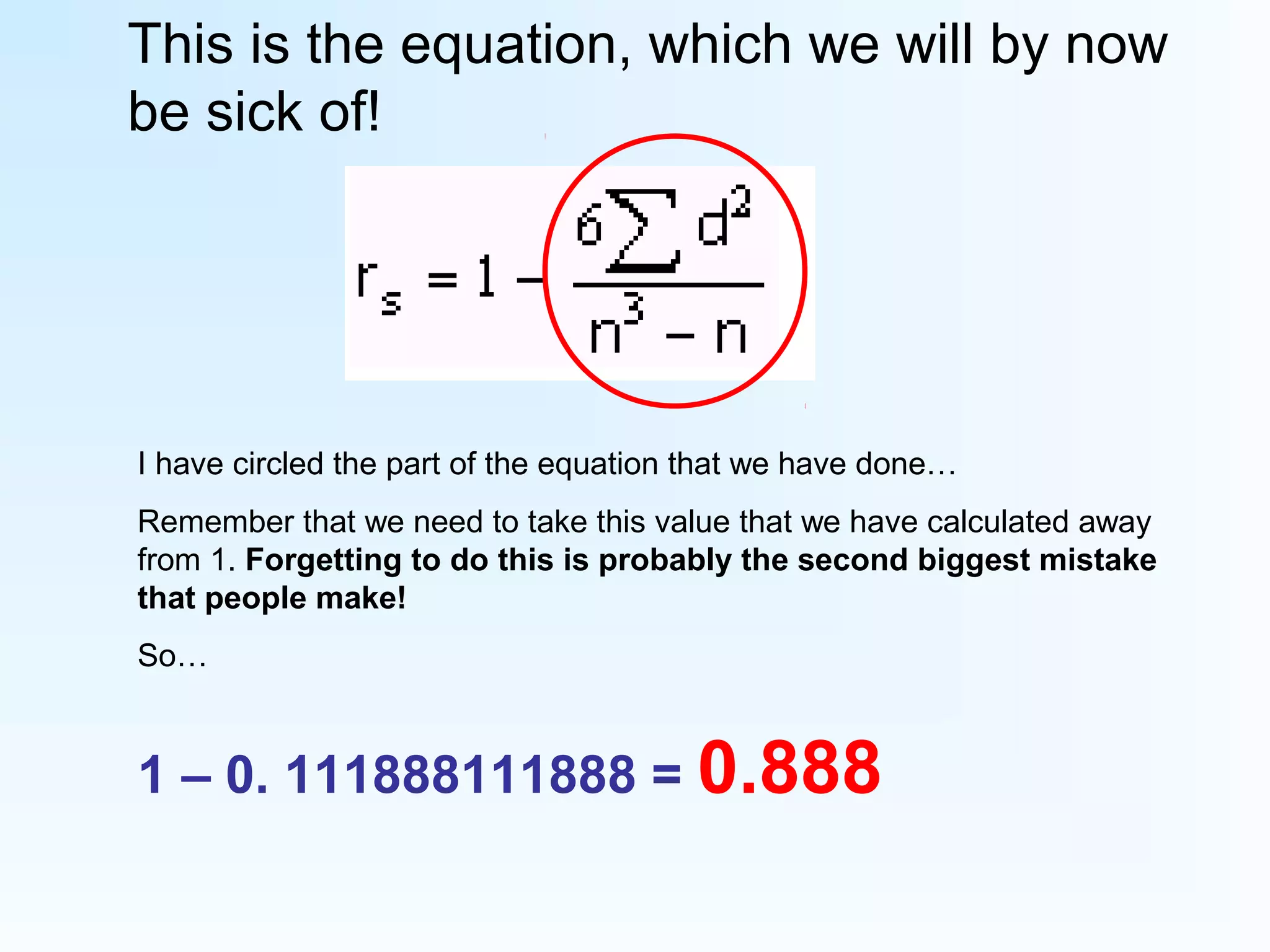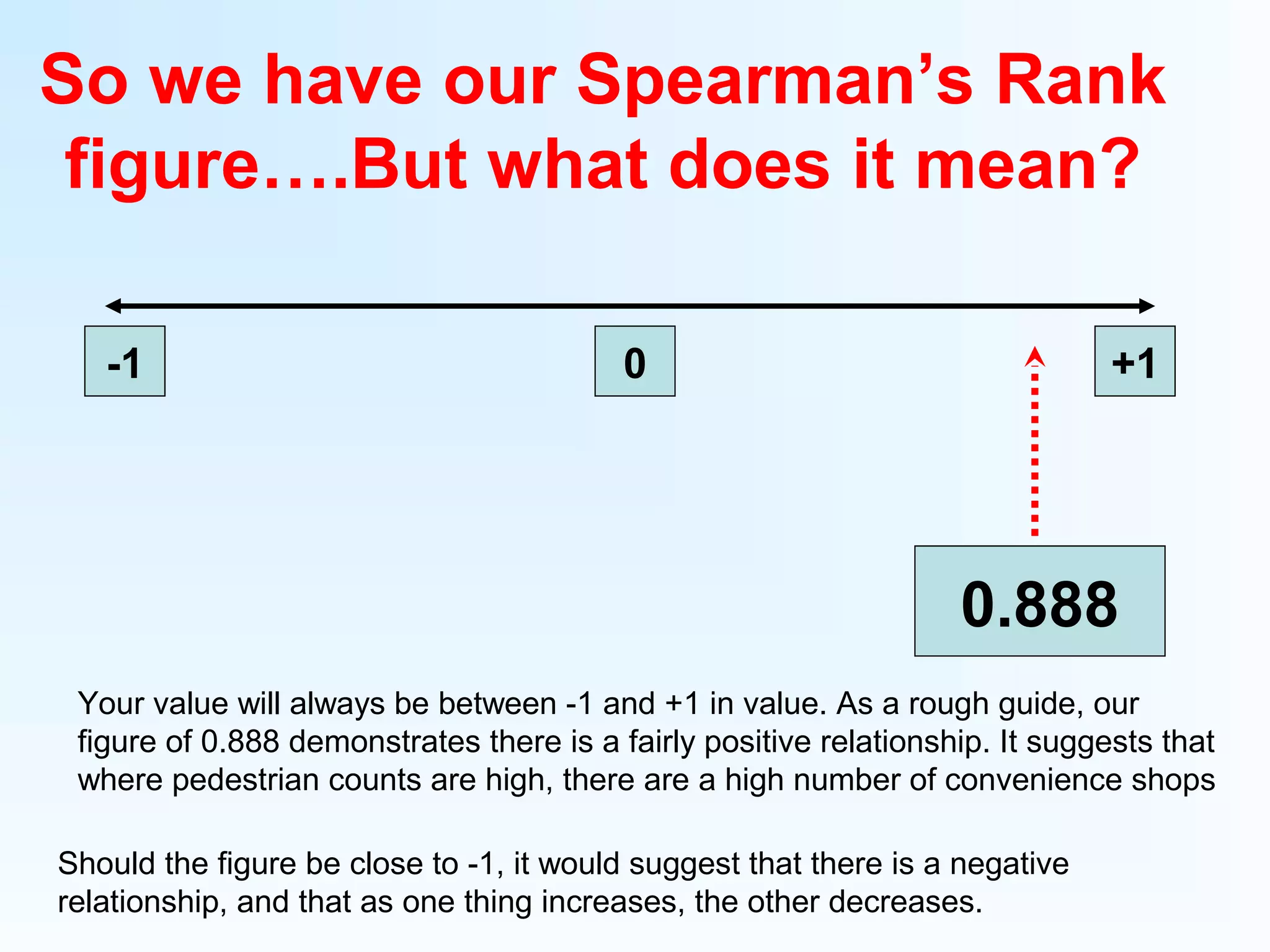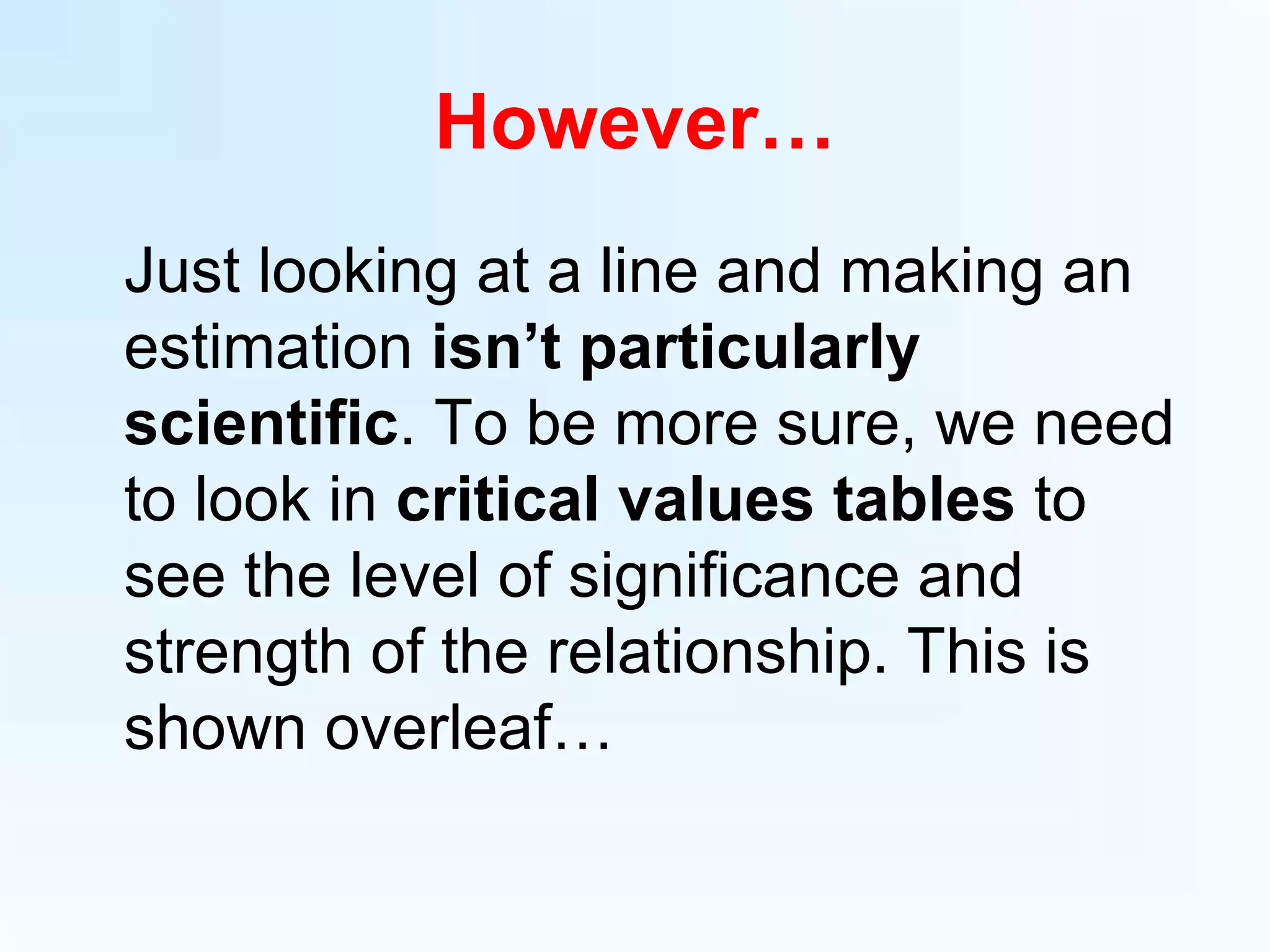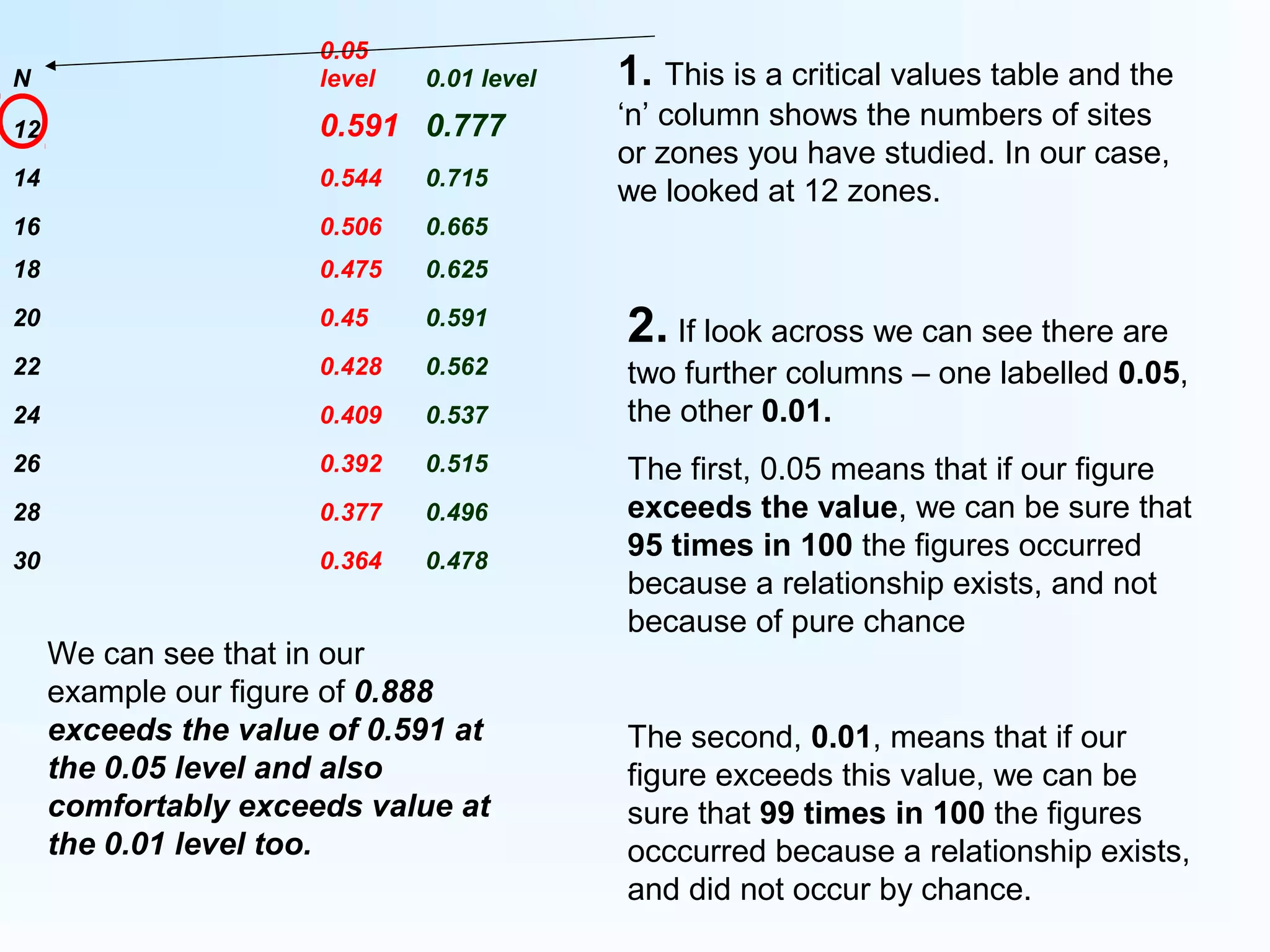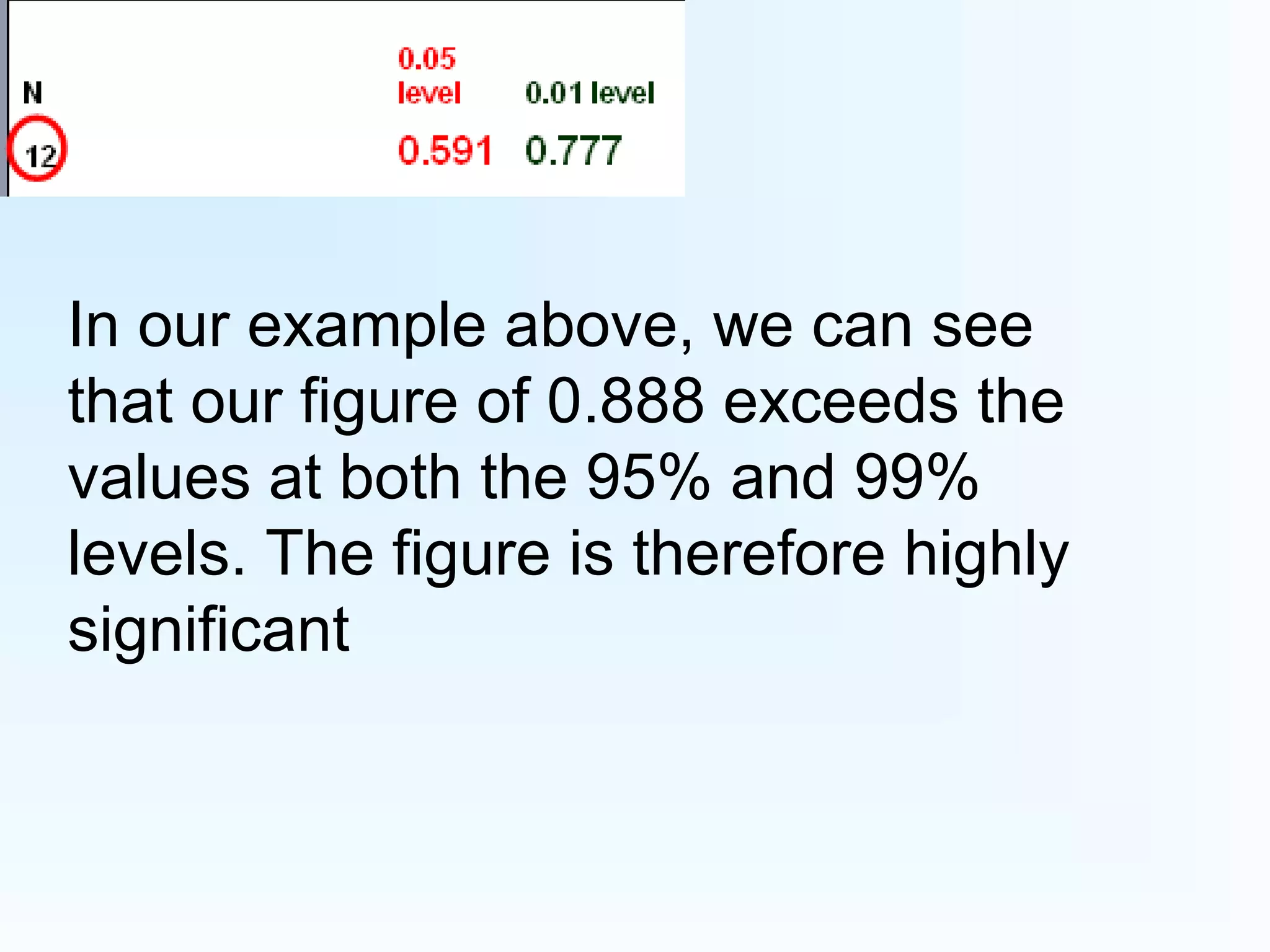This document provides instructions for calculating and interpreting Spearman's rank correlation coefficient. It begins with an example comparing pedestrian counts and convenience shops in 12 town zones. Tables are constructed to rank the data and calculate differences between ranks. The equation for Spearman's rank is shown and applied to the example data, yielding a value of 0.888. This indicates a fairly positive relationship between pedestrian counts and shops. Critical values tables are presented to determine statistical significance based on the sample size. In this case, the value exceeds thresholds for 95% and 99% confidence, showing a highly significant relationship.
